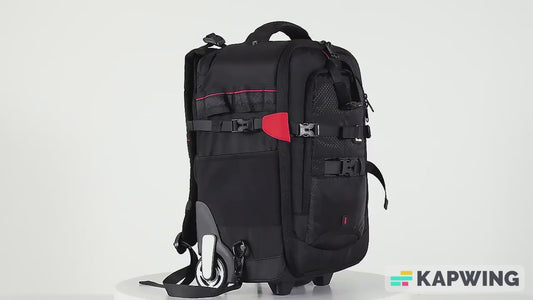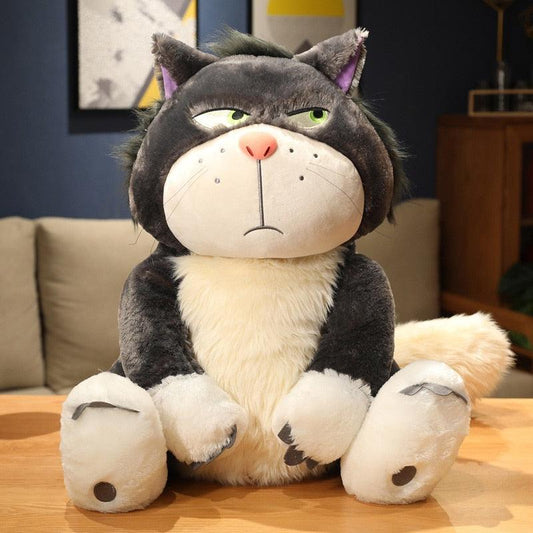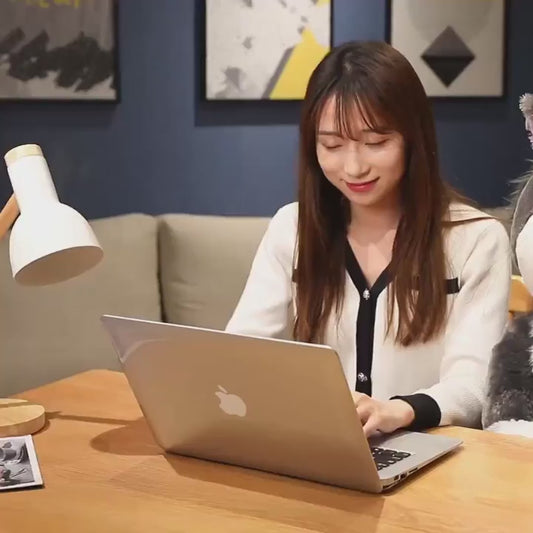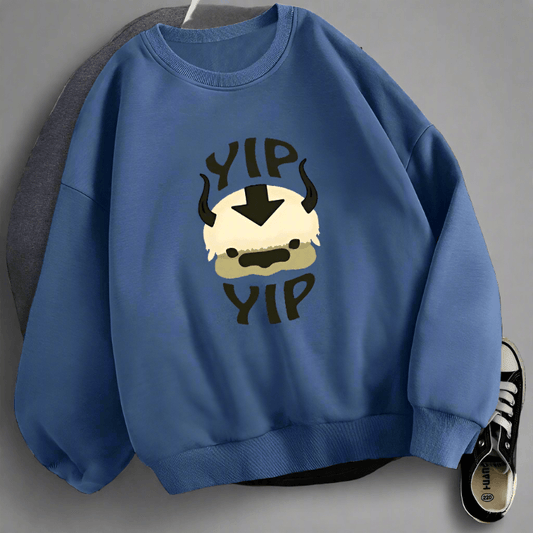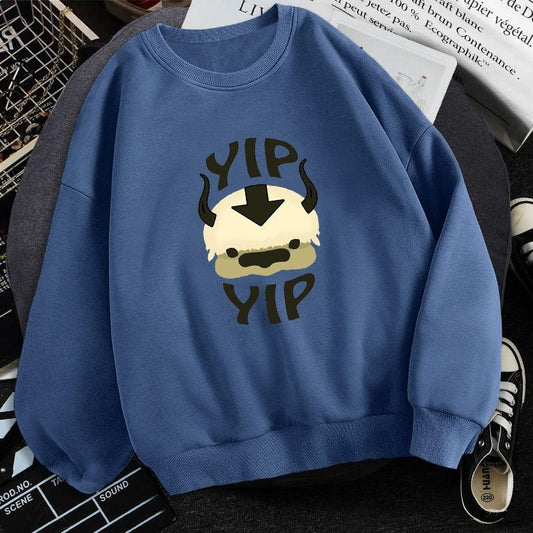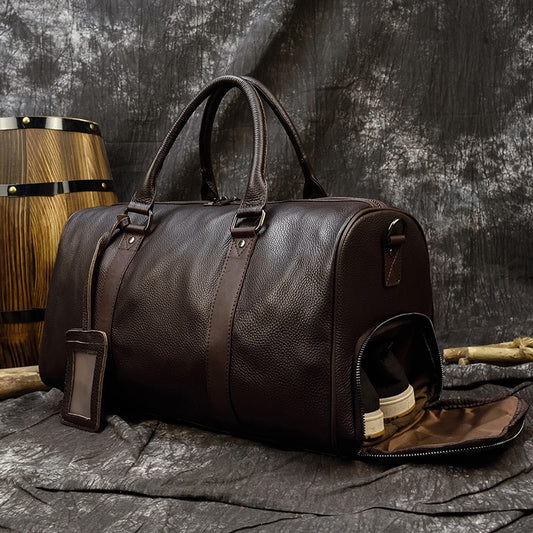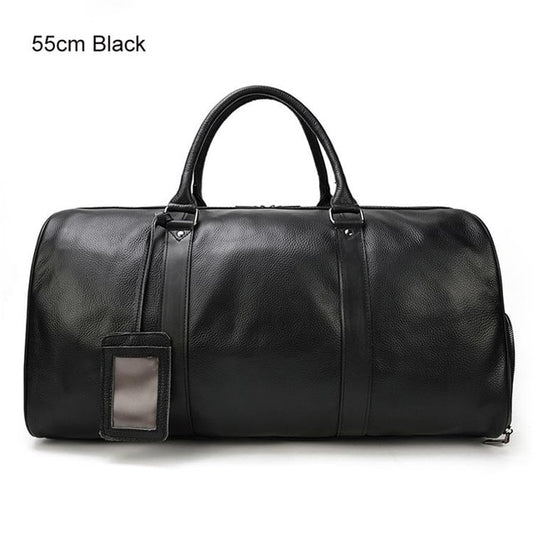The Quiet Revolution in Your Wardrobe: Exploring the Versatility of Poplin Fabric
Have you ever wondered about the fabric that's been quietly revolutionizing your wardrobe? Look no further than poplin, a textile that combines durability, breathability, and versatility to become a staple in modern textiles. From crisp business shirts to flowing summer dresses, poplin has woven its way into our daily lives, offering comfort and style in equal measure.
The Rich History of Poplin
Poplin's journey began in the 15th century in Avignon, France. Originally called "papelino," it was named after the papal residence, highlighting its initial association with luxury and prestige. Another theory suggests its name derives from Poperinge, a town in Flanders renowned for its textile production.
Fast forward to today, and poplin's relevance has only grown. Its widespread use in fashion and home textiles is a testament to its enduring appeal. As sustainability trends gain momentum, poplin, particularly in its organic cotton form, is experiencing a resurgence in popularity.
Understanding Poplin Fabric
What Exactly is Poplin?
Poplin is a plain weave fabric characterized by its fine horizontal ribs and silky, lustrous surface. This unique structure contributes to its strength and versatility. According to textile expert Dr. Emma Thompson, "Poplin's distinctive weave creates a fabric that's both durable and breathable, making it ideal for a wide range of applications."
Composition and Varieties
One of poplin's strengths lies in its adaptability to different fibers. It can be made from:
- Cotton
- Wool
- Silk
- Rayon
- Polyester
Often, these fibers are blended to enhance specific properties. For instance, a cotton-polyester blend might offer the breathability of cotton with the wrinkle-resistance of polyester.
Key Properties That Make Poplin Stand Out
- Durability: The tight weave of poplin creates a strong, long-lasting fabric.
- Breathability: Despite its strength, poplin allows air circulation, keeping the wearer cool.
- Versatility: From formal wear to casual attire, poplin adapts to various styles.
- Ease of Care: Most poplin fabrics are machine washable and require minimal ironing.
Fabric technologist Sarah Lee notes, "Poplin's combination of durability and breathability makes it an excellent choice for everyday wear. Its ability to maintain shape while allowing air flow is unparalleled in many other fabrics."
Poplin in Action: Applications Across Industries
Fashion Industry
Poplin's versatility shines in the fashion world. It's commonly used for:
- Shirts and blouses
- Dresses and skirts
- Lightweight jackets
Fashion designer Marco Rossi explains, "Poplin gives us the flexibility to create structured pieces that still flow beautifully. It's a go-to fabric for summer collections due to its lightness and breathability."
Uniforms and Workwear
The durability of poplin makes it ideal for uniforms. A notable example is its use in hospital scrubs. According to a 2021 industry report, "5-ounce poly-cotton blend poplin has largely replaced trigger fabric for hospital scrubs after a major mill shutdown, showcasing poplin's adaptability to market demands."
Home Textiles
In the home, poplin finds its place in:
- Bedding
- Curtains
- Tablecloths
Interior designer Lisa Chen shares, "Poplin's crisp finish and easy maintenance make it perfect for home textiles. It adds a touch of elegance without the fuss of high-maintenance fabrics."
Current Trends: Poplin in the Sustainability Movement
As consumers become more environmentally conscious, organic cotton poplin is gaining traction. Certifications like GOTS (Global Organic Textile Standard) and OEKO-TEX are becoming increasingly important.
Environmental textile consultant Dr. Alex Green explains, "Organic cotton poplin offers the same great properties as traditional poplin but with a significantly reduced environmental impact. It's a win-win for both consumers and the planet."
Comparing Poplin to Similar Fabrics
| Fabric | Weave | Characteristics | Common Uses |
|---|---|---|---|
| Poplin | Plain weave | Durable, breathable, fine horizontal ribs | Shirts, dresses, uniforms |
| Broadcloth | Plain weave | Smooth finish, densely woven | Formal shirts, quilting |
| Twill | Twill weave | Diagonal ribs, less breathable than poplin | Jeans, workwear |
| Chambray | Plain weave | Soft, lightweight, subtle sheen | Casual shirts, summer dresses |
Working with Poplin: Tips for DIY Enthusiasts
If you're considering working with poplin for your next project, here are some expert tips:
- Selecting the Right Poplin: Consider the end-use. A cotton-poplin blend might be perfect for a summer dress, while a sturdier poly-cotton poplin could be better for a jacket.
- Pre-treatment: Always pre-wash your poplin fabric to account for any shrinkage. Steam ironing before cutting can also help achieve better results.
-
Sewing Tips:
- Use a fine needle (size 70/10 or 80/12) to prevent damage to the fabric.
- Set your machine to a straight stitch with a length of 2.5-3mm for most projects.
- Consider using a walking foot for even feed, especially with lighter weight poplins.
- Advanced Techniques: For a professional finish, try French seams on lightweight poplin garments or flat-felled seams for more structured pieces.
Sewing instructor Maria Gonzalez advises, "When working with poplin, precision is key. Take your time with cutting and pressing, and you'll be rewarded with beautifully crisp results."
Frequently Asked Questions About Poplin
What are the best uses for poplin in home decor?
Poplin excels in home decor applications that benefit from its crispness and easy care. It's particularly well-suited for curtains, offering a clean, tailored look while allowing light to filter through. Poplin also makes excellent bed linens, providing a cool and comfortable sleep surface. For dining areas, poplin tablecloths offer durability and stain resistance, making them perfect for both everyday use and special occasions.
How does poplin compare to linen for summer clothing?
While both poplin and linen are popular choices for summer clothing, they have distinct characteristics. Poplin is typically smoother and more wrinkle-resistant than linen, making it a lower-maintenance option. It also tends to be more affordable. Linen, on the other hand, is often considered more breathable and has a more relaxed, lived-in look. Textile expert Dr. Sarah Thompson notes, "Poplin offers a crisper, more polished appearance compared to linen's casual elegance. For structured summer wear, poplin is often the preferred choice."
Can poplin be used for formal wear?
Absolutely! Poplin's versatility extends to formal wear, particularly in shirts and blouses. Its crisp texture and ability to hold shape make it an excellent choice for dress shirts worn under suits or with formal skirts. High-end designer Michael Chen states, "A well-tailored poplin shirt is a staple in formal wear. Its clean lines and lustrous finish contribute to a polished, professional look."
What are the advantages of organic poplin over regular poplin?
Organic poplin, particularly organic cotton poplin, offers several advantages:
- Environmental sustainability: Grown without harmful pesticides or synthetic fertilizers
- Reduced allergenic properties: Beneficial for those with sensitive skin
- Improved durability: Often softer and longer-lasting due to the absence of harsh chemicals in processing
- Ethical production: Usually associated with fair labor practices
Sustainability expert Dr. Elena Rodriguez explains, "Choosing organic poplin supports a more environmentally friendly and socially responsible textile industry, without compromising on the fabric's quality or performance."
How does poplin perform in extreme weather conditions?
Poplin's performance in extreme weather depends on its fiber composition. Cotton poplin excels in hot weather due to its breathability and moisture-wicking properties. In cold weather, wool or synthetic poplin blends can provide better insulation. Outdoor gear specialist Tom Baker notes, "For all-weather performance, look for poplin blends that combine natural and synthetic fibers. These can offer the comfort of natural fibers with the weather-resistance of synthetics."
Overcoming Challenges with Poplin
While poplin is a versatile and user-friendly fabric, it's not without its challenges. Here are some common issues and solutions:
1. Shrinkage
Problem: Cotton poplin, in particular, can shrink after washing.
Solution: Always pre-wash your poplin fabric before cutting and sewing. For ready-made garments, follow care instructions carefully, often recommending cold water washes and low-heat drying.
2. Creasing
Problem: While more crease-resistant than some fabrics, poplin can still wrinkle, especially in pure cotton form.
Solution:
- Use a steam iron on the appropriate heat setting for the fabric blend.
- For printed poplin, iron on the reverse side to protect the print.
- Consider using a spray starch for a crisper finish on items like shirts.
Textile care expert Jane Smith advises, "To minimize creasing in poplin garments, remove them from the dryer promptly and hang or fold immediately. For stubborn wrinkles, a handheld steamer can work wonders without the risk of scorching."
Ethical Considerations and Best Practices
As consumers become more conscious of their environmental impact, considering the ethical aspects of fabric choice is increasingly important.
Choosing Sustainable Poplin Options
- Opt for organic cotton poplin when possible. It's grown without harmful pesticides and uses less water.
- Look for recycled polyester poplin blends, which help reduce plastic waste.
- Check for certifications like GOTS (Global Organic Textile Standard) or OEKO-TEX, which ensure environmental and social responsibility in production.
Supporting Ethical Manufacturing
Research brands that prioritize fair labor practices and transparent supply chains. Many companies now provide information about their manufacturing processes and worker conditions.
Proper Disposal and Recycling
When it's time to part with your poplin items:
- Consider upcycling projects to give the fabric new life.
- Donate wearable items to second-hand stores or charities.
- Look for textile recycling programs in your area for items that can't be reused.
Sustainability consultant Dr. Mark Green emphasizes, "The lifecycle of a garment doesn't end when we stop wearing it. Responsible disposal of poplin and other textiles is crucial in reducing the fashion industry's environmental footprint."
Success Stories: Poplin in Action
Case Study: Hospital Scrubs Revolution
In 2019, a major supplier of trigger fabric for hospital scrubs shut down operations, creating a gap in the medical uniform market. Poplin, specifically a 5-ounce poly-cotton blend, stepped in to fill this void.
Medical supply coordinator Sarah Johnson recalls, "The transition to poplin scrubs was seamless. The fabric's durability and ease of care made it an instant hit with medical professionals. We've seen a 30% reduction in uniform replacement costs since making the switch."
Designer Spotlight: Innovative Use of Poplin in High Fashion
Renowned fashion designer Elena Rodriguez made waves in her 2022 Spring/Summer collection by featuring poplin in unexpected ways. Her collection included structured evening gowns and avant-garde outerwear, all crafted from various poplin blends.
Rodriguez explains her choice: "Poplin's versatility allowed me to push boundaries. By manipulating the fabric through innovative cutting and draping techniques, we created pieces that challenged the traditional perception of poplin as a daywear fabric."
The collection received critical acclaim, with Vogue praising its "revolutionary approach to a classic fabric."
Home Decor Transformation Using Poplin Fabrics
Interior designer Alex Chen transformed a dated beach house into a modern oasis using poplin fabrics throughout. From breezy curtains to crisp bedding and even upholstered accent pieces, poplin played a starring role in the renovation.
"The client wanted a fresh, easy-to-maintain space that still felt luxurious," Chen shares. "Poplin's range of colors and weights allowed us to create a cohesive look throughout the house while ensuring everything could stand up to sandy feet and salty air."
The project was featured in Architectural Digest, highlighting how a thoughtful use of fabric can completely change the feel of a space.
Essential Tools and Resources for Working with Poplin
Tools for the DIY Enthusiast
- Sewing Machine: A good quality machine with adjustable tension is crucial for working with poplin's smooth surface.
- Steam Iron: Essential for pressing seams and achieving a crisp finish.
- Sharp Scissors: Invest in fabric scissors specifically for cutting poplin and other fabrics.
- Rotary Cutter and Mat: For precise cutting, especially useful for larger projects.
- Pins and Needles: Fine, sharp pins and needles prevent damage to the fabric.
Equipment for Professional Results
- Serger/Overlock Machine: For professional-looking seam finishes, especially important for poplin's tendency to fray.
- Coverlock Machine: Ideal for hemming poplin garments with a professional touch.
- Industrial Steam Press: For larger scale production or home decorators working with large pieces of poplin.
Online Resources
- Fabric.com: Extensive selection of poplin fabrics and blends.
- Mood Fabrics: High-quality poplin options, including designer overstock.
- Threads Magazine: Excellent resource for sewing techniques specific to poplin and other fabrics.
- Textile School: In-depth information on poplin production and properties.
Sewing instructor Lisa Wong recommends, "For beginners working with poplin, start with simple projects like pillowcases or tote bags. These allow you to get a feel for the fabric's properties before moving on to more complex garments."
Conclusion: The Enduring Appeal of Poplin
As we've explored throughout this article, poplin's combination of durability, breathability, and versatility has cemented its place as a staple in modern textiles. From its historical roots in 15th century France to its current status as a go-to fabric for everything from high fashion to home decor, poplin continues to adapt and thrive.
The future outlook for poplin in the textile industry remains bright. As sustainability becomes increasingly important, the shift towards organic and recycled poplin options is likely to accelerate. Additionally, innovations in fabric technology may lead to new poplin blends with enhanced properties, further expanding its applications.
Fashion historian Dr. Emily Clark predicts, "Poplin's adaptability will ensure its relevance in the coming decades. As we see a growing emphasis on versatile, durable clothing, poplin is perfectly positioned to meet these needs while also aligning with eco-conscious consumer demands."
Whether you're a fashion enthusiast, a DIY crafter, or simply someone who appreciates quality textiles, poplin offers something for everyone. Its enduring popularity is a testament to its unique combination of practicality and style, making it a fabric that truly stands the test of time.
As we look to the future of textiles, one thing is clear: poplin will continue to play a significant role, quietly revolutionizing our wardrobes and homes for years to come.
Additional Resources
For those interested in delving deeper into the world of poplin and textile craftsmanship, consider exploring these resources:
Books
- "The Fabric of Our Lives: A Comprehensive Guide to Modern Textiles" by Dr. Sarah Thompson
- "Sewing with Poplin: Techniques for Perfect Results" by Maria Gonzalez
- "Sustainable Fashion and Textiles: Design Journeys" by Kate Fletcher
Online Tutorials
- Craftsy: Advanced Poplin Tailoring Techniques
- Skillshare: Designing and Sewing with Poplin
- YouTube: The Essentials of Poplin Fabric Care
Sustainable Poplin Fabric Suppliers
By exploring these resources, you can continue to expand your knowledge and skills in working with poplin, ensuring that you make the most of this versatile and enduring fabric in your projects and everyday life.



